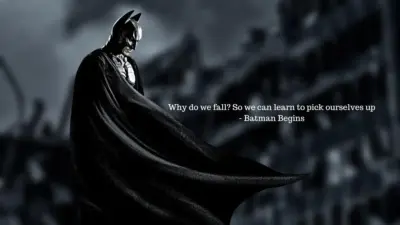Writing Rituals: How Famous Authors Find Inspiration? Writing is a craft that requires both skill and inspiration. For many famous authors, the journey from a blank page to a finished masterpiece is paved with unique writing rituals that help them tap into their creativity and find the elusive muse. In this article, we delve into the fascinating world of these rituals and explore how renowned writers have cultivated their creative processes. From the solitude of early mornings to the comfort of familiar spaces, these authors offer insights into the practices that fuel their literary endeavors.
Writing Rituals: How Famous Authors Find Inspiration
The Morning Muse
The creative power of early mornings has been affirmed by renowned authors. Ernest Hemingway, famed for his succinct prose, once noted, “There is no one to disturb you and it is cool or cold and you come to your work and warm as you write.” Hemingway’s practice involved rising before dawn, capitalizing on the serene solitude mornings provide. Likewise, Haruki Murakami, a contemporary literary luminary, rises at 4 a.m. to initiate his writing ritual.
He contends that the hushed hours preceding the world’s awakening provide an enclave for uninterrupted creativity. In this tranquil cocoon, these authors find a realm where the stillness of dawn fuels their imagination, allowing them to craft their literary masterpieces undisturbed.
The Sacred Space: Creating a Writing Sanctuary
The quest for the ideal writing haven is a cherished ritual among authors. J.K. Rowling, celebrated for birthing the “Harry Potter” series, etched her tales within café walls, encapsulating the essence of her nomadic writing odyssey. Astonishingly, upon completing the final installment, she bequeathed a handwritten copy to an Edinburgh café, thus cementing its integral role in her creative voyage. In contrast, Roald Dahl meticulously curated his writing sanctuary.
Nestled within his garden was a snug, idyllic hut where he wove enchanting narratives. This sanctified abode bestowed upon him a refuge from the world, a cocoon of detachment, enabling him to submerge himself entirely into the tapestry of his stories. These distinct approaches to crafting a writing space illuminate the diverse facets of an author’s connection with their creative realm, revealing how personalized sanctuaries, whether transient or steadfast, can bear testament to the profound interplay between environment and imagination.
Consistency Breeds Creativity
Repetition, a subtle orchestrator of creative momentum, can serve as an adept conductor, signaling the mind to embrace the realm of imagination. Anthony Trollope, a Victorian virtuoso of literature, employed a regimented routine that saw him craft 250 words every quarter hour, a practice punctuated by the soft tick-tock of a pocket watch. This disciplined cadence acted as a siren call to his creative faculties.
Maya Angelou, the revered poet and author, wove her own enchanting tapestry of repetition. She sought refuge in a rented hotel room, an oasis solely adorned with a bottle of sherry, a deck of cards, and her trusted legal pad. In this sacred cocoon, a sanctuary of consistency took shape. The uniformity of the setting and the rituals enshrouding it laid the bedrock for her creative symphony to unfurl.
These luminaries’ reverence for repetition underscores its role as a catalyst, a force that can coax the creative psyche into full bloom. Through the rhythm of methodical moments or the embrace of a familiar setting, these authors demonstrated the capacity of repetition to foster an environment conducive to the birth of literary marvels.
The Body-Mind Connection
Physical activities stand as alchemical catalysts, capable of summoning the elusive spirits of inspiration. Agatha Christie, the doyenne of detective fiction, uncovered her creative gems in the embrace of long baths. Amidst the tranquil waters, she attested that her most ingenious ideas bubbled to the surface, borne of moments steeped in contemplation.
In contrast, the maestro of horror, Stephen King, choreographs his own prelude to creation. He immerses himself in the roar of loud music, likening the experience to a spirited cleansing of mental cobwebs. This auditory cleanse sweeps away distractions, ensuring his mind is a pristine canvas, primed for the artistry of words.
These physical rituals stand as testaments to the intricate interplay between corporeal sensations and cognitive flights. Christie’s aquatic reverie and King’s symphonic prelude illuminate the intimate relationship between body and mind, revealing that the reservoirs of creativity often flourish when the body is at ease, when it resonates with rhythms that stir the ethereal waters of inspiration.
Embracing Unconventionality: Quirky Habits and Superstitions
Famous authors, those architects of imagination, often nurture idiosyncratic habits and superstitions that metamorphose into the cornerstone of their creative sanctuaries. The enigmatic Truman Capote, for instance, held a curious allegiance to the days of the week. He resolutely abstained from commencing or concluding a piece of work on a Friday, an esoteric practice that attested to the delicate dance between his craft and cosmic energies.
In the realm of tactile rituals, John Steinbeck fashioned an ensemble of twelve immaculately honed pencils as his quiver for literary battles. Each pencil bore the precision of a warrior’s blade, and in their graphite strokes, he sculpted worlds and characters that transcended the mundane.
Meanwhile, the illustrious Vladimir Nabokov wove his literary tapestries through the medium of index cards. These unassuming paper squares became his palette, upon which he painted his narratives. Nabokov’s artistry extended to the act of rearrangement – the cards shuffled like secrets, forming stories that were both meticulously structured and profoundly evocative.
These eccentric practices paint a portrait of the intimate communion between writers and their craft. Each habit, each superstition, is a fingerprint on the canvas of creativity, a whisper of the author’s psyche entwined with the alchemy of words. In these peculiarities, we glimpse the profound convergence of personality, creativity, and the mystique that shrouds the genesis of literary brilliance.
Conclusion
Aspiring writers often seek the elusive secret to creative brilliance. The truth is, there is no one-size-fits-all formula. The writing rituals of famous authors illustrate the diverse ways in which creativity can be nurtured and harnessed. From the tranquility of early mornings to the familiarity of personal spaces, these rituals serve as a testament to the power of routine, consistency, and the unique quirks that make each writer’s journey one-of-a-kind. By exploring these rituals, writers can glean inspiration and insight, finding their own paths to creative mastery.
Also Read: 10 Best British Authors of All Time | Top 10 British Writers



